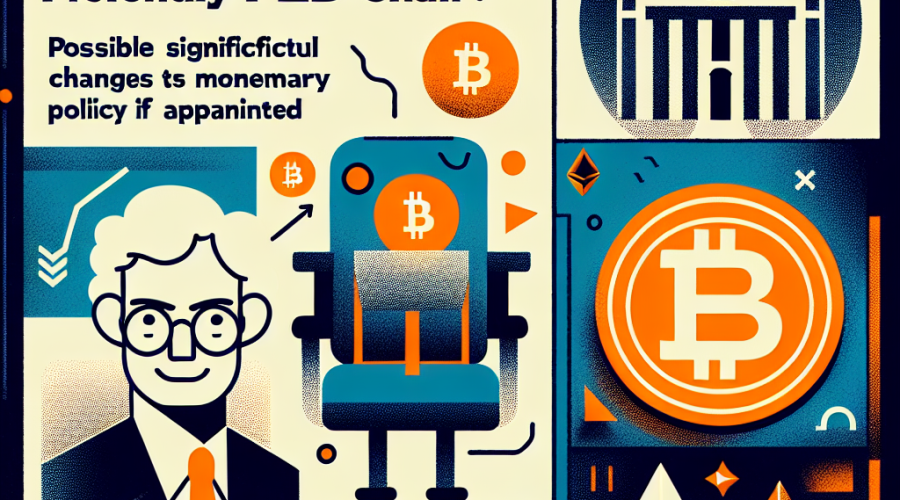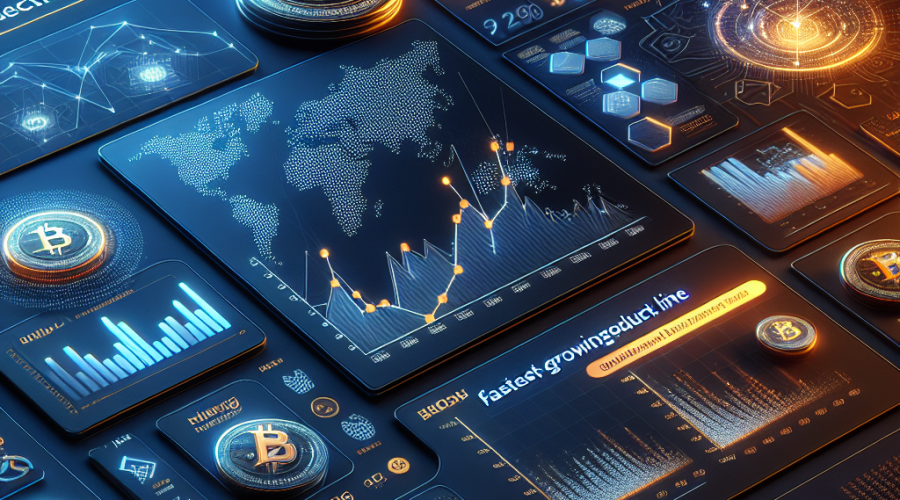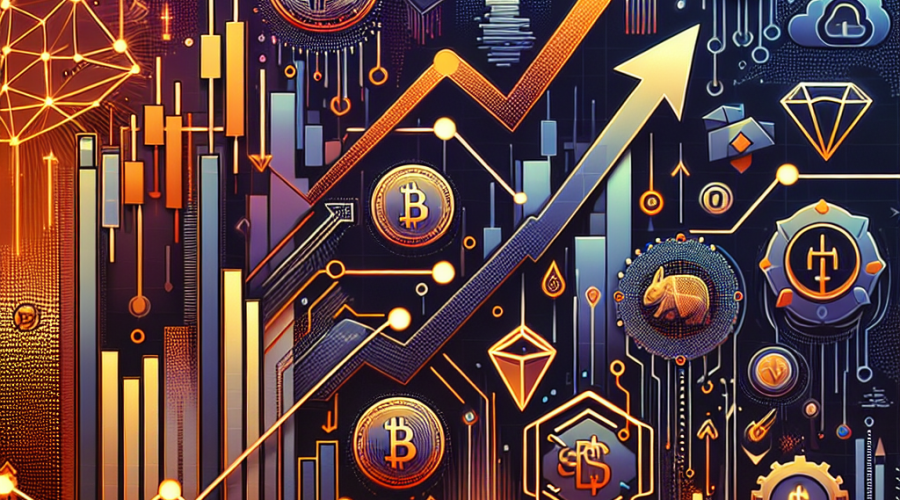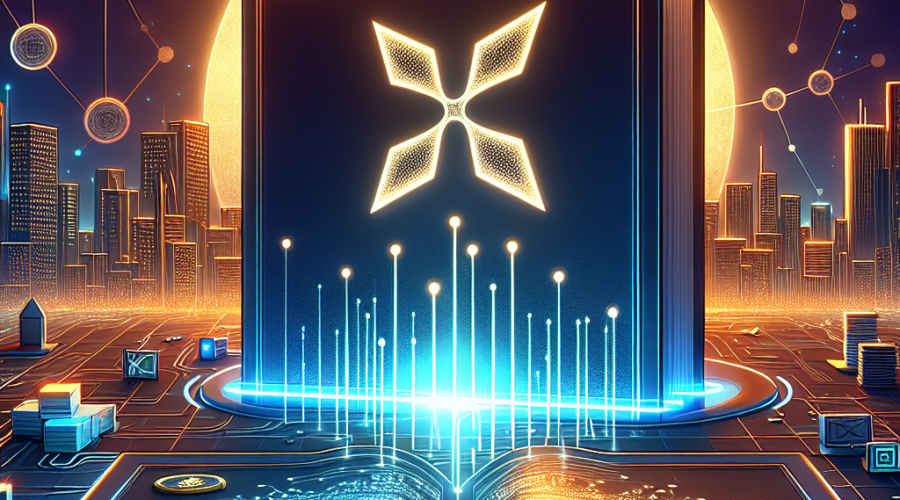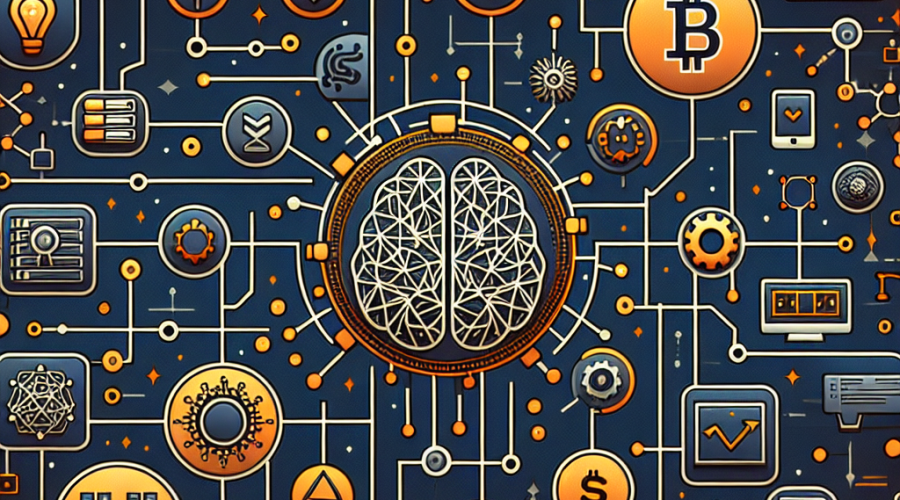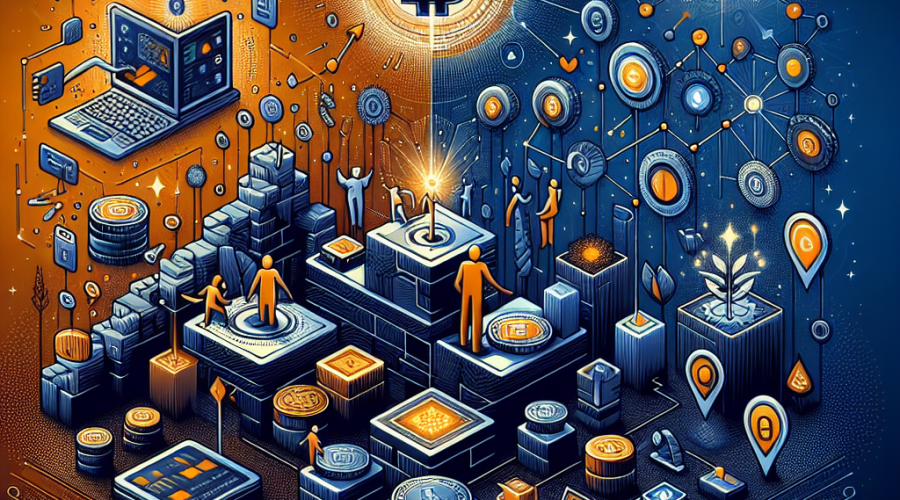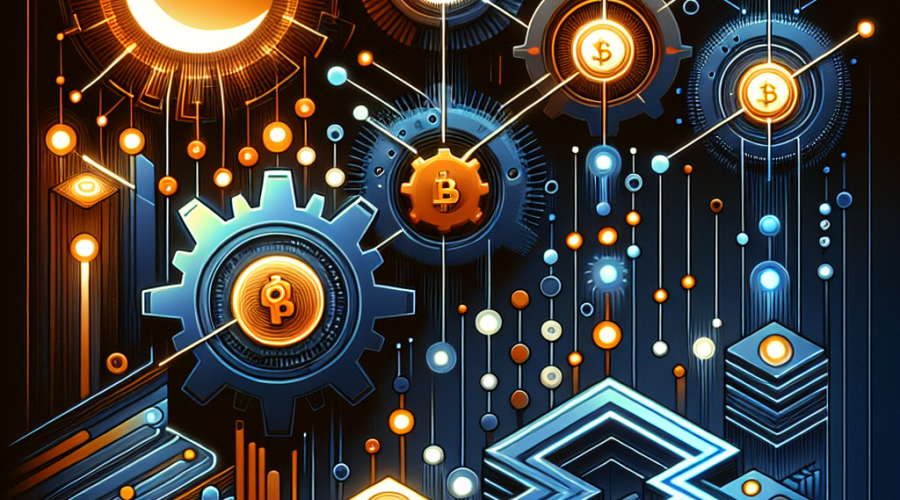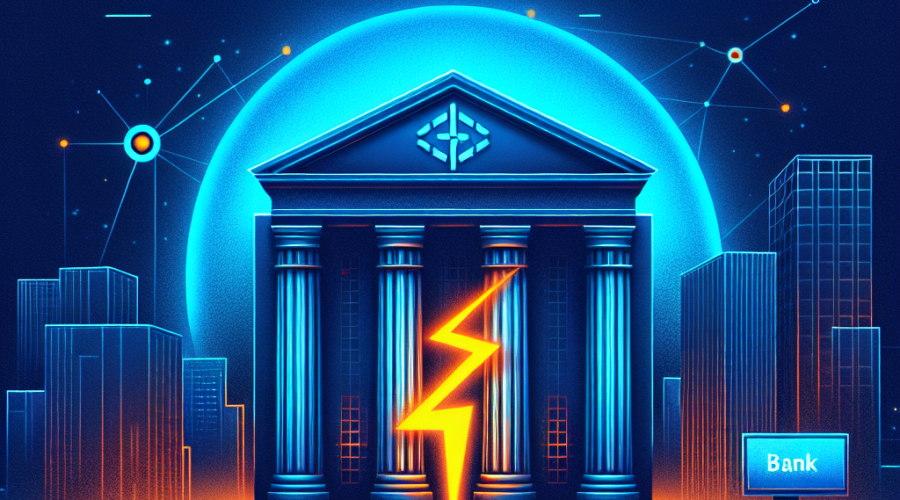May 11, 2025
Leveraging Idle CPUs for AI Tasks: Enhancing Efficiency with Decentralized Compute Platforms
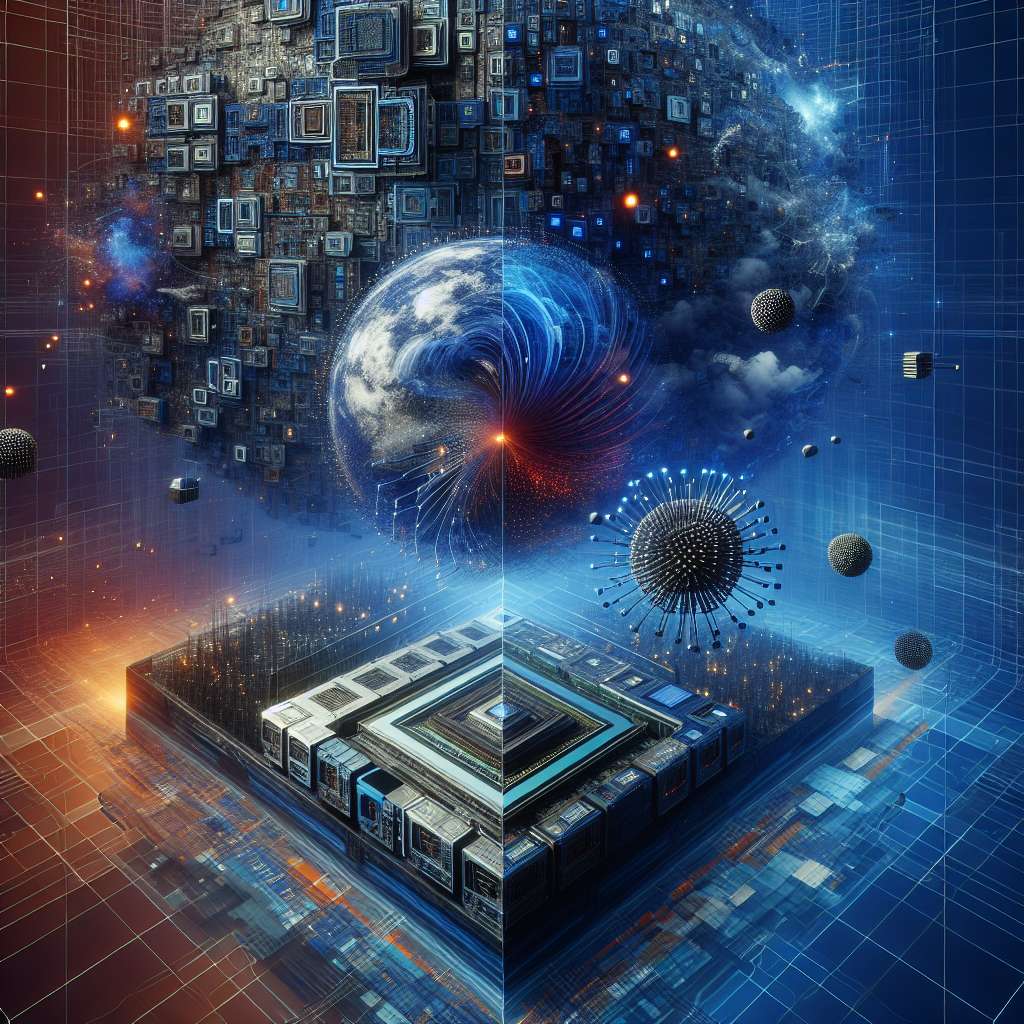

Financial Analyst & Content Creator | Expert in Cryptocurrency & Forex Education
James Carter is an experienced financial analyst, crypto educator, and content creator with expertise in crypto, forex, and financial literacy. Over the past decade, he has built a multifaceted career in market analysis, community education, and content strategy. At AltSignals.io, James leads content creation for English-speaking audiences, developing articles, webinars, and guides that simplify complex market trends and trading strategies. Known for his ability to make technical finance topics accessible, he empowers both new and seasoned investors to make informed decisions in the ever-evolving world of digital finance.
Latest posts by James Carter
-
James Carter Financial Analyst & Content Creator | Expert in Cryptocurrency & Forex Education
Robinhood is gearing up to launch a CFTC-regulated derivatives exchange through a partnership with Susquehanna. The company, which significantly contributes to sector leader Kalshi’s market volumes, plans to expand its influence by adding its own prediction markets liquidity and exchange infrastructure. Meanwhile, other major platforms like Coinbase are also preparing to introduce prediction market products, contributing to a shifting competitive landscape.
Read more -
James Carter Financial Analyst & Content Creator | Expert in Cryptocurrency & Forex Education
Bitcoin starts showing signs of stabilizing as ETF inflows return with $129 million on Nov. 25. Aligned altcoins like Ethereum and Solana also posted substantial inflows amid selective rotation. The crypto market analysis suggests several influences are affecting the market’s movement including mixed macro signals, institutional stress, and changing financial infrastructure. The market habitually fluctuates with factors like upcoming Fed decisions, potential government shutdown and tax seasons. Bitcoin prices remain around the $86,900 mark with muted movements.
Read more -
James Carter Financial Analyst & Content Creator | Expert in Cryptocurrency & Forex Education
Crypto-friendly Kevin Hassett, White House economic adviser and director of the National Economic Council, is reportedly a leading contender for the Federal Reserve Chair position. With a known involvement in digital assets and a shared desire with President Trump to cut rates, Hassett’s potential nomination could have significant implications for the cryptocurrency market.
Read more -
James Carter Financial Analyst & Content Creator | Expert in Cryptocurrency & Forex Education
“Robinhood’s prediction markets see rapid growth, with plans to expand through a futures and derivatives exchange and clearinghouse. The trading platform attributes this expansion to strong customer demand and is set to acquire MIAXdx. Details on the rise of prediction markets in crypto world and comparison with other platforms also explored.”
Read more -
James Carter Financial Analyst & Content Creator | Expert in Cryptocurrency & Forex Education
Markets surged as the likelihood of a December US Federal Reserve rate cut drove gains in Bitcoin, equities, and gold, while the launch of Monad’s mainnet and MON token signaled innovation in blockchain performance and liquidity. Galaxy Digital is also in focus for its diversified approach to crypto and AI infrastructure, with new tokenized securities on Solana and a growing retail platform. Explore how shifting monetary policy, emerging blockchain technologies, and institutional investment are shaping the future of digital asset markets and financial innovation.
Read more -
James Carter Financial Analyst & Content Creator | Expert in Cryptocurrency & Forex Education
Franklin Templeton has launched the XRPZ ETF, its first XRP-backed exchange-traded fund, giving institutional and retail investors regulated, secure access to XRP without direct token ownership. The XRPZ ETF leverages XRP’s strengths in speed, cost-efficiency, and real-world applications for global payments, while utilizing top-tier custodianship from Coinbase and BNY Mellon. Early investor interest and robust inflows mark a pivotal step for mainstream crypto adoption, cementing Franklin Templeton as a leader in digital asset investment offerings.
Read more -
James Carter Financial Analyst & Content Creator | Expert in Cryptocurrency & Forex Education
Metaplanet, a Tokyo-listed DAT firm, has secured an additional $130 million loan against its bitcoin holdings, using a portion of its $500 million credit line. The company plans to invest these funds into buying more bitcoins, expanding its bitcoin income strategies, and repurchasing stocks depending on market conditions. Despite an 81% stock price drop since June, Metaplanet maintains significant collateral coverage due to its substantial bitcoin reserves.
Read more -
James Carter Financial Analyst & Content Creator | Expert in Cryptocurrency & Forex Education
Cryptocurrency markets opened the week with modest Bitcoin gains and strong performance from AI and DePIN sectors, despite falling application and network revenues and continued Bitcoin ETF outflows signaling institutional caution. DeFi and Ethereum sectors also rose, while security concerns remain central for DeFi and Web3 users. As macroeconomic uncertainty looms, the market shows both evolving optimism and lingering caution, with traders rotating capital towards high-growth narratives and innovative platforms like Nubank driving user adoption
Read more -
James Carter Financial Analyst & Content Creator | Expert in Cryptocurrency & Forex Education
GeeFi is emerging as a powerful alternative to Tron by offering a comprehensive DeFi ecosystem with features like a non-custodial wallet, high-yield staking, decentralized exchange integration, and a user-friendly HUB for portfolio management. With a successful token presale, strong community incentives, and a focus on cross-chain functionality, GeeFi aims to deliver practical utility, passive income, and empowerment for crypto investors, positioning itself as a next-generation blockchain platform for the evolving Web3 landscape.
Read more -
James Carter Financial Analyst & Content Creator | Expert in Cryptocurrency & Forex Education
Enso’s integration with the newly launched Monad mainnet revolutionizes DeFi development by providing a unified toolkit, instant access to leading protocols, and seamless developer workflows. Monad’s high-speed Layer-1 blockchain, powered by innovative optimistic parallel execution and strong ecosystem support, enables fast, secure, and scalable decentralized finance applications. Discover how this strategic partnership empowers developers, enhances user experience, and sets new standards for efficiency and growth in the DeFi sector.
Read more -
James Carter Financial Analyst & Content Creator | Expert in Cryptocurrency & Forex Education
Strike CEO Jack Mallers’ bank accounts were closed by JPMorgan Chase without explanation, sparking concerns over potential debanking for executives within the crypto industry. This news comes amid rumors of ‘Operation Chokepoint 2.0’, a supposed coordinated effort by U.S. banking regulators to deny services to those involved in the crypto ecosystem. President Trump previously signed an executive order which penalizes firms for debanking crypto-businesses.
Read more -
James Carter Financial Analyst & Content Creator | Expert in Cryptocurrency & Forex Education
Bitkub, Thailand’s largest cryptocurrency exchange, is reportedly considering an Initial Public Offering (IPO) in Hong Kong with a goal of raising $200 million. Initially considering going public in its home country, Bitkub has possibly put those plans on hold due to Thailand’s underperforming stock market. The potential Hong Kong IPO could happen as early as next year, aiming to increase the company’s global visibility and expand into new markets.
Read more
Latest posts from the category News
-
James Carter Financial Analyst & Content Creator | Expert in Cryptocurrency & Forex Education
Robinhood is gearing up to launch a CFTC-regulated derivatives exchange through a partnership with Susquehanna. The company, which significantly contributes to sector leader Kalshi’s market volumes, plans to expand its influence by adding its own prediction markets liquidity and exchange infrastructure. Meanwhile, other major platforms like Coinbase are also preparing to introduce prediction market products, contributing to a shifting competitive landscape.
Read more -
James Carter Financial Analyst & Content Creator | Expert in Cryptocurrency & Forex Education
Bitcoin starts showing signs of stabilizing as ETF inflows return with $129 million on Nov. 25. Aligned altcoins like Ethereum and Solana also posted substantial inflows amid selective rotation. The crypto market analysis suggests several influences are affecting the market’s movement including mixed macro signals, institutional stress, and changing financial infrastructure. The market habitually fluctuates with factors like upcoming Fed decisions, potential government shutdown and tax seasons. Bitcoin prices remain around the $86,900 mark with muted movements.
Read more -
James Carter Financial Analyst & Content Creator | Expert in Cryptocurrency & Forex Education
Crypto-friendly Kevin Hassett, White House economic adviser and director of the National Economic Council, is reportedly a leading contender for the Federal Reserve Chair position. With a known involvement in digital assets and a shared desire with President Trump to cut rates, Hassett’s potential nomination could have significant implications for the cryptocurrency market.
Read more -
James Carter Financial Analyst & Content Creator | Expert in Cryptocurrency & Forex Education
“Robinhood’s prediction markets see rapid growth, with plans to expand through a futures and derivatives exchange and clearinghouse. The trading platform attributes this expansion to strong customer demand and is set to acquire MIAXdx. Details on the rise of prediction markets in crypto world and comparison with other platforms also explored.”
Read more -
James Carter Financial Analyst & Content Creator | Expert in Cryptocurrency & Forex Education
Markets surged as the likelihood of a December US Federal Reserve rate cut drove gains in Bitcoin, equities, and gold, while the launch of Monad’s mainnet and MON token signaled innovation in blockchain performance and liquidity. Galaxy Digital is also in focus for its diversified approach to crypto and AI infrastructure, with new tokenized securities on Solana and a growing retail platform. Explore how shifting monetary policy, emerging blockchain technologies, and institutional investment are shaping the future of digital asset markets and financial innovation.
Read more -
James Carter Financial Analyst & Content Creator | Expert in Cryptocurrency & Forex Education
Franklin Templeton has launched the XRPZ ETF, its first XRP-backed exchange-traded fund, giving institutional and retail investors regulated, secure access to XRP without direct token ownership. The XRPZ ETF leverages XRP’s strengths in speed, cost-efficiency, and real-world applications for global payments, while utilizing top-tier custodianship from Coinbase and BNY Mellon. Early investor interest and robust inflows mark a pivotal step for mainstream crypto adoption, cementing Franklin Templeton as a leader in digital asset investment offerings.
Read more -
James Carter Financial Analyst & Content Creator | Expert in Cryptocurrency & Forex Education
Metaplanet, a Tokyo-listed DAT firm, has secured an additional $130 million loan against its bitcoin holdings, using a portion of its $500 million credit line. The company plans to invest these funds into buying more bitcoins, expanding its bitcoin income strategies, and repurchasing stocks depending on market conditions. Despite an 81% stock price drop since June, Metaplanet maintains significant collateral coverage due to its substantial bitcoin reserves.
Read more -
James Carter Financial Analyst & Content Creator | Expert in Cryptocurrency & Forex Education
Cryptocurrency markets opened the week with modest Bitcoin gains and strong performance from AI and DePIN sectors, despite falling application and network revenues and continued Bitcoin ETF outflows signaling institutional caution. DeFi and Ethereum sectors also rose, while security concerns remain central for DeFi and Web3 users. As macroeconomic uncertainty looms, the market shows both evolving optimism and lingering caution, with traders rotating capital towards high-growth narratives and innovative platforms like Nubank driving user adoption
Read more -
James Carter Financial Analyst & Content Creator | Expert in Cryptocurrency & Forex Education
GeeFi is emerging as a powerful alternative to Tron by offering a comprehensive DeFi ecosystem with features like a non-custodial wallet, high-yield staking, decentralized exchange integration, and a user-friendly HUB for portfolio management. With a successful token presale, strong community incentives, and a focus on cross-chain functionality, GeeFi aims to deliver practical utility, passive income, and empowerment for crypto investors, positioning itself as a next-generation blockchain platform for the evolving Web3 landscape.
Read more -
James Carter Financial Analyst & Content Creator | Expert in Cryptocurrency & Forex Education
Enso’s integration with the newly launched Monad mainnet revolutionizes DeFi development by providing a unified toolkit, instant access to leading protocols, and seamless developer workflows. Monad’s high-speed Layer-1 blockchain, powered by innovative optimistic parallel execution and strong ecosystem support, enables fast, secure, and scalable decentralized finance applications. Discover how this strategic partnership empowers developers, enhances user experience, and sets new standards for efficiency and growth in the DeFi sector.
Read more -
James Carter Financial Analyst & Content Creator | Expert in Cryptocurrency & Forex Education
Strike CEO Jack Mallers’ bank accounts were closed by JPMorgan Chase without explanation, sparking concerns over potential debanking for executives within the crypto industry. This news comes amid rumors of ‘Operation Chokepoint 2.0’, a supposed coordinated effort by U.S. banking regulators to deny services to those involved in the crypto ecosystem. President Trump previously signed an executive order which penalizes firms for debanking crypto-businesses.
Read more -
James Carter Financial Analyst & Content Creator | Expert in Cryptocurrency & Forex Education
Bitkub, Thailand’s largest cryptocurrency exchange, is reportedly considering an Initial Public Offering (IPO) in Hong Kong with a goal of raising $200 million. Initially considering going public in its home country, Bitkub has possibly put those plans on hold due to Thailand’s underperforming stock market. The potential Hong Kong IPO could happen as early as next year, aiming to increase the company’s global visibility and expand into new markets.
Read more
Subscribe to new posts
Receive the most up to date insights & strategies
Corporate
Affiliates Program:
AffiliatesTraders Contact:
[email protected]Marketing:
[email protected]Your investments are your responsibility
We do not accept any liability for any loss or damage which is incurred from you acting or not acting as a result of reading any of our publications. You acknowledge that you use the information we provide at your own risk.
Altsignals does not offer investment advice and nothing in the calls we make should be construed as investment advice. Altsignals provides information and education based on our own trades. You are paying to follow our trades that we document for educational purposes.
© AltSignals Trade Calls. All rights reserved.




